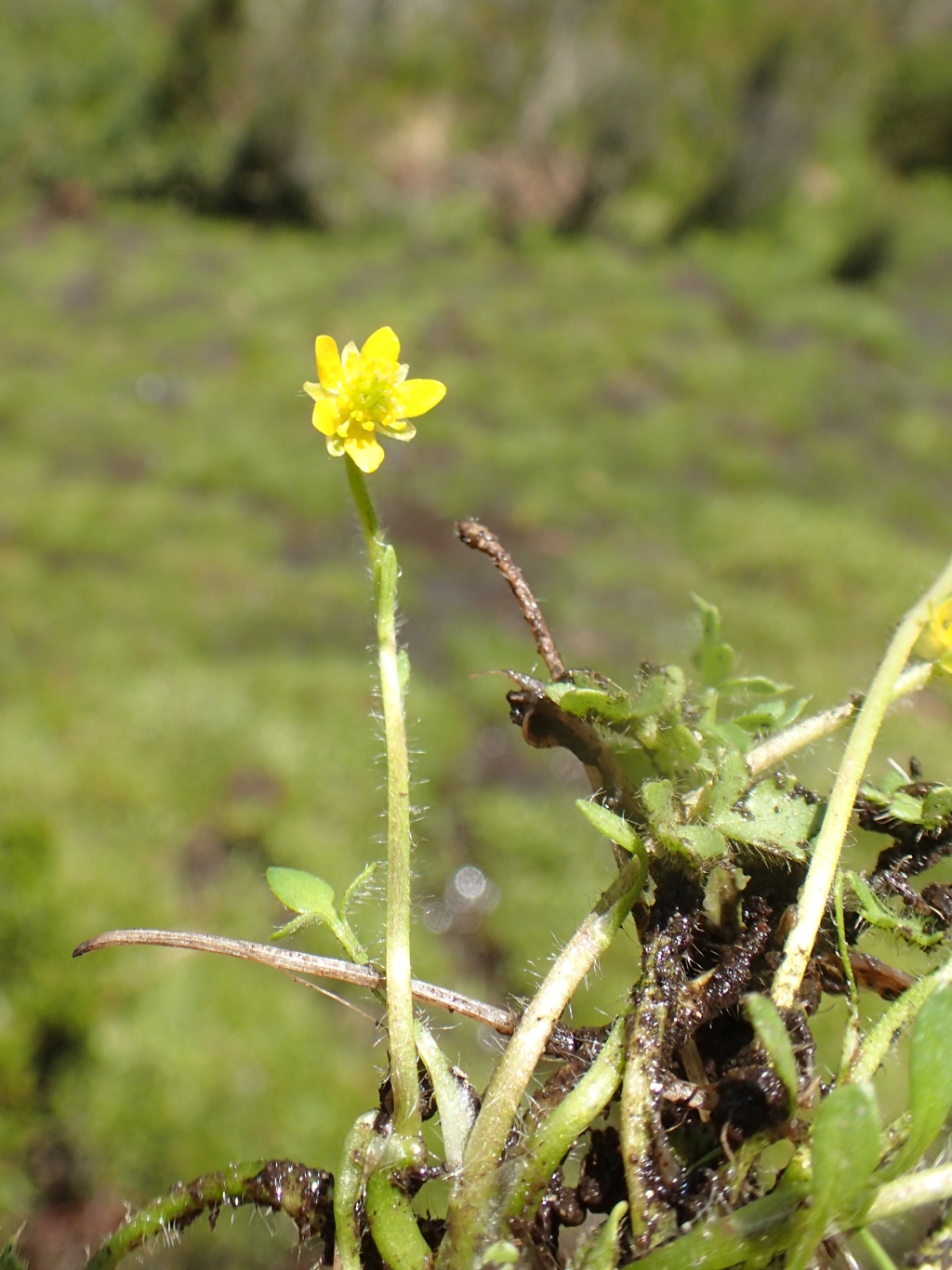Ranunculus pimpinellifolius
Hook. Bog ButtercupTufted perennial with fibrous to subfleshy roots. Leaves mostly basal; petioles 2–12 cm long, with fine spreading hairs; lamina ovate to oblong in outline, 1–5 cm long, sparsely to rather densely covered with fine spreading hairs, pinnately divided into 3–7 segments, the segments usually 3-lobed or with conspicuous rounded teeth. Flowering stems erect or spreading, shorter or longer than leaves, with spreading and/or appressed hairs, simple or sometimes branched with up to 5 flowers; sepals 5, spreading, ovate, 3–6 mm long, hairy on back; petals 5 (rarely more), narrowly obovate to ovate, 4–9 mm long, 1.5–4 mm wide, yellow, glossy; nectary lobe triangular or rounded, obtuse or emarginate, thickish, c. 0.5 mm long; stamens 20–35. Achenes usually 10–40, c. elliptic, 2–3 mm long, flatfish, smooth on sides; beak weakly curved, c. 1 mm long, usually with a short apical hook; receptacle hispid between achenes, glabrous to hispid in the staminal zone. Flowers Nov.–Jan.
CVU, NIS, EGU, HSF, HNF, MonT, HFE, VAlp. Also NSW, ACT, Tas. Occasional in boggy situations on the higher ranges (rare on Mt Buffalo and the Baw Baws, apparently absent from Lake Mountain) with occurrences at lower altitudes in the Delegate-Bendock and Wulgulmerang areas.
Walsh, N.G. (1996). Ranunculaceae. In: Walsh, N.G.; Entwisle, T.J., Flora of Victoria Vol. 3, Dicotyledons Winteraceae to Myrtaceae, pp. 35–63. Inkata Press, Melbourne.
 Spinning
Spinning

